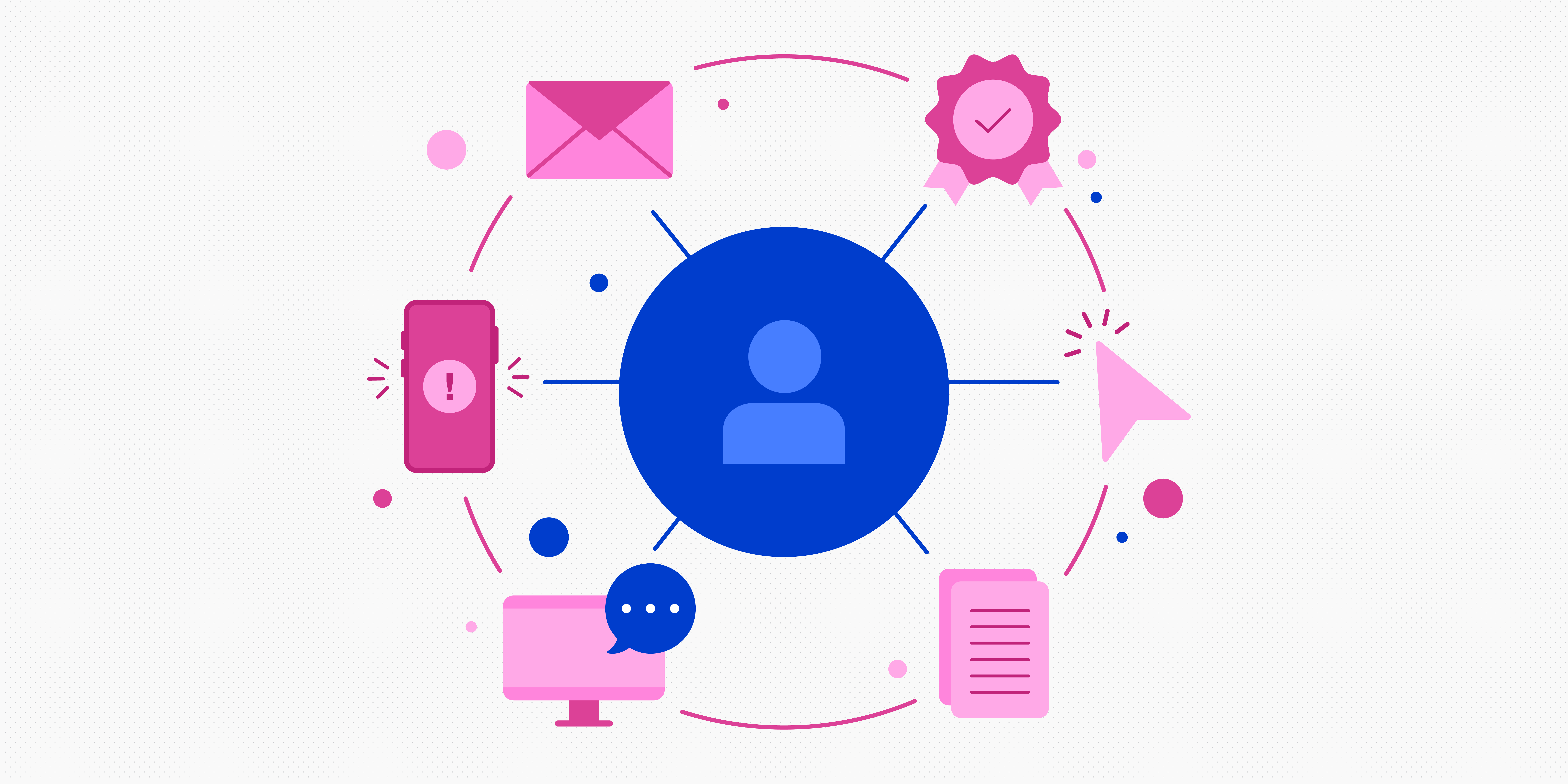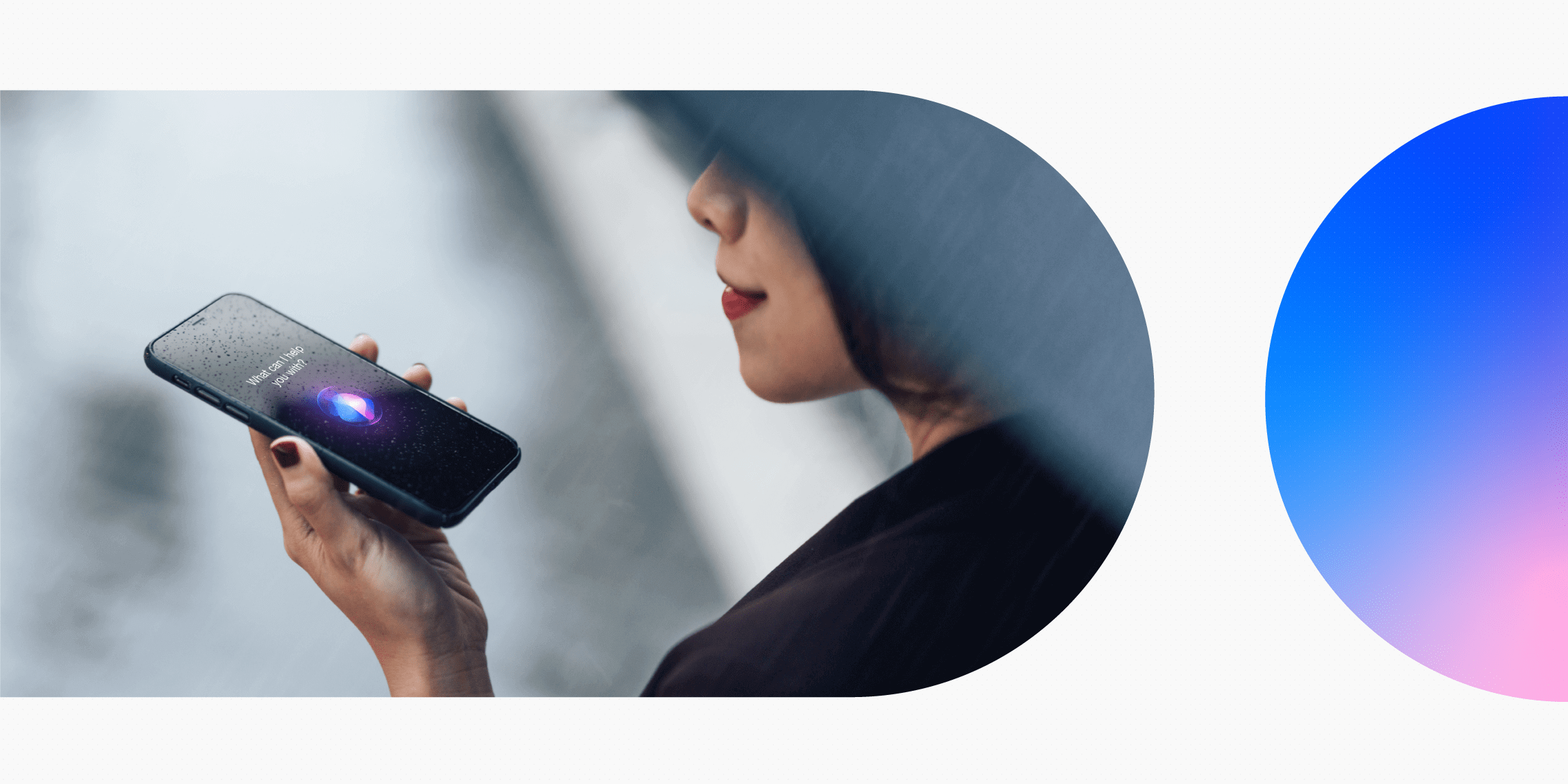User research is the cornerstone of good UX—but what exactly are the benefits? Learn about the importance of user research in this guide, as well as how to get stakeholder buy-in.
It’s impossible to overstate the importance of user research in UX design.
This crucial step ensures that you’re designing the right products/features for your target users—and that you’re solving the problems they actually need you to solve.
As a UX designer, you know that user research is important. But how do you articulate the value it brings, not just to your design process but to the business as a whole?
In this guide, we break down the true importance of user research and show you how to get stakeholder buy-in for your next UX project. Keep reading to learn:
- What is user research?
- The importance of user research in UX design: 5 key benefits
- How to get stakeholder buy-in for user research
- How to get started with user research
We’ll start by explaining what user research is. If you’re already familiar, skip straight to the benefits using the clickable menu.
What is user research?
User research in UX design is an integral part of the overall process. It helps you get to know your target users, giving you a clear understanding of:
- Who you’re designing for and why;
- The problems your target users encounter in relation to your product/service;
- What your target users need and want from the product/service/feature you’re designing.
Ultimately, user research ensures that you’re designing to meet the end user’s needs.
So what exactly happens during user research?
User research is a process in itself. During the user research phase, UX designers (or dedicated UX researchers) use one or several user research methods to gather data about their target users.
The exact methods used will depend on when the research is being conducted (before designing a brand new product, for example, or to learn more about the users of an existing product), the kinds of insights you want to uncover, as well as the time and resources available.
After conducting user research, it’s important to analyse and synthesise your results in order to turn them into actionable insights. These insights will inform your design decisions and move the project forward.
What are the different types of user research?
User research can be qualitative or quantitative.
Qualitative user research explores how your users think and feel about their experience with a particular brand, product, or service. It includes methods such as user interviews, ethnographic studies, and surveys with open-ended questions which invite qualitative answers (not just a yes/no or numerical rating).
Quantitative user research gives you quantitative (i.e. measurable) data. It results in objective insights—such as how many times a user clicks on a certain button in a given period, or the average time it takes for the user to complete a particular task.
You can learn more about the different types of user research and their associated methods in this guide: Quantitative vs. qualitative research.
That’s UX research in brief. Now let’s consider why user research is so important.
The importance of user research in UX design: 5 key benefits
When defining user research, we said that it helps you get to know your target users and ensures that you’re designing to meet their needs.
That already speaks volumes about the importance of user research. The ultimate goal of UX design is to solve user problems and create products and services that are accessible and user-friendly.
How can you do that if you don’t know who your users are and what problems they face?
How can you design a user-friendly website or app for a particular target audience if you don’t know anything about their needs, goals, and expectations?
You can’t.
Well, you could—but you’d be basing your designs on guesswork and assumptions, with a very slim chance of landing on the right solution.
User research is essential because:
- It helps you cultivate empathy for your end users
- It identifies the exact user problem you’re designing to solve
- It empowers you to make data-driven design decisions (no more guesswork!)
- It saves time and money in the long run
- User research = a better user experience (and a more successful product)
Let’s delve deeper into the benefits of user research.
1. User research helps you cultivate empathy for your users
How many times have you read or heard that empathy is one of the most important skills for a UX designer?
Empathy is about putting yourself in your users’ shoes and understanding, as closely as possible, how they experience a particular task, product, or service. If you can cultivate empathy for your target users, you can start to envision the most helpful solutions.
User research is the first step towards building empathy. It gives you the opportunity to speak to, observe, and/or hear from your target users—giving you first-hand insight into who they are, the problems they encounter, and what they might need from the product you’re designing.
2. User research identifies the exact user problem you need to solve
If you’re familiar with the UX design process, you’ll know that one of the most important early steps is defining the problem you’re going to solve for your users.
User research uncovers the most pressing issues your users face, helping you prioritise your design efforts accordingly.
Imagine a new client approaches you for a redesign of their website. They tell you that they’re experiencing a high user bounce rate and need to improve their overall UX. Now, unless you identify what’s causing the high bounce rate, it’ll be very difficult for you to make any meaningful improvements.
With user research, you can bring user problems and pain-points to light, making sure your design efforts are focused on solving them.
3. User research empowers you to make data-driven design decisions (no more guesswork!)
Once you’ve identified the problem you need to solve, it’s essential to come up with the right solutions. You might guess what the solution is and design it based on your own assumptions…or you can make informed decisions based on actual data and insights you’ve gathered about your users.
The first approach is nothing more than guesswork with a heavy dose of bias. The second approach ensures that you’re designing with your users in mind—catering to their specific needs and goals.
You can guess which approach is likely to be most effective!
4. User research is a HUGE time- and money-saver
In organisations where UX maturity is low, UX designers can face resistance when it comes to getting the time and resources they need to conduct user research.
There might be a temptation to ‘save time and money’ by skipping user research and moving straight to the design phase. But it’s a false economy!
Let’s consider two scenarios:
1) You spend, say, €800 on user research, extending the overall project timeline by 2 weeks. During the user research phase, you discover that the new feature you’d been planning to add to your product wouldn’t actually solve the user problems you’re uncovering. You’re able to change direction to focus on designing a more relevant feature. You reach the development stage a few weeks later than planned, but you’ve designed the right thing. Your end users are happy and you’ve improved your product’s UX.
2) You skip user research and go straight to the design phase, implementing the new feature that you think will solve your users’ problems. You’ve saved €800 and the project is on schedule—woohoo! However, a few months down the line, your users are still experiencing the same issue. You’ve wasted time and money developing the wrong feature, and now you have to go right back to square one.
User research requires more time and money up front. But, in the long-term, it will save you both.
5. User research = a better user experience (and a more successful product)
The bottom line is that user research ensures a better user experience—which ultimately results in a more successful product.
The best brands, products, and services deliver an excellent user experience. They provide their target users with what they want, and they are able to do that because they invest in user research.
You can’t have good UX without good user research. It’s as simple as that!
How to get stakeholder buy-in for user research
Most UX designers understand the importance of user research. Often, the challenge lies in getting stakeholder buy-in—that is, getting the time and budget you need to conduct user research.
Here are some tips to help you advocate for user research and win stakeholder buy-in.
1. Dig deeper to understand why there’s resistance to user research in the first place
You know how, when conducting user research, you dig deep into how your users feel and why they feel that way? You can do the same with your anti-user-research stakeholders.
Figuring out why they’re resistant to user research in the first place will help you to win them over. It’s like finding out the user problem you need to solve before you can come up with the right solution.
The best way to do this is through an open and respectful conversation. Approach with empathy and genuine curiosity—it should feel like a discussion, not an inquisition.
You might ask “What are the main barriers to us conducting user research?” or “What are your main concerns when it comes to user research?”
Once you understand the root problem—lack of funds, not enough time, uncertainty around the value of user research—you can start to come up with solutions.
2. Get good (really good) at demonstrating and communicating the importance of user research
Often, it’s hard to get buy-in for user research because those outside of UX don’t fully understand its importance or value.
As a UX designer and/or researcher, you may need to spend some time advocating for user research in order to get people on board. Get good—really good—at communicating (or, even better, demonstrating) the value of user research.
Put forward all those benefits we outlined earlier. Explain how user research works and why it’s crucial for cultivating user empathy, identifying and solving the right user problems, and making informed design decisions.
Highlight how user research saves time and money (presenting real data based on actual development costs, if you have that information to hand).
Be frank about what happens if you skip user research—that you risk designing the wrong thing or solving the wrong problem, wasting time and money while failing to actually improve the user experience.
If you can put forward a compelling case for the value of user research, it should be much easier to get stakeholder buy-in.
3. Create a minimum viable research plan
Just as you might create an MVP (minimum viable product), consider creating a minimum viable research plan.
Your minimum viable research plan is about doing the best user research you can with the least amount of time and resources. It’s a way of easing stakeholders into the idea of user research by starting off small.
For example, if you’re asking for just one extra week and a budget of €100, it feels like a smaller investment—which makes it easier for reluctant stakeholders to say yes.
If you can get your minimum viable research plan approved, you can come back next time with tangible proof as to why user research is valuable. From there, it’ll be easier to get buy-in for more extensive user research in the future.
Getting started with user research
User research is synonymous with good UX. You can’t design relevant, user-friendly, enjoyable experiences without understanding your target users—and that’s only possible through user research.
Understanding the importance of user research is just the first step. To really unleash the value of UX research, it’s essential to:
- Choose the right user research methods. Different research methods provide different insights, so you first need to determine what kind of data will be most useful—and then choose your research methods accordingly. Do you want to focus on qualitative user research to understand how your users feel, or do you want quantitative data to measure certain aspects of the user experience? Perhaps a mixture of both? Figure out what’s preferable and possible for achieving your research goals
- Leverage user research tools. There are dozens of different tools and software out there to help you recruit user research participants, conduct user research, and analyse your user research data. Before you embark on your next UX research initiative, make sure you’ve got the right tools to hand. You’ll find a guide to the best UX research tools here.
- Turn your user research findings into actionable insights. Once you’ve spent time conducting user research, you’ll need to pull out your key findings and turn them into action points. This involves writing a UX research research report (which can also be useful for communicating the value of your research). We show you how to write a research report and present your findings in this guide.
You now have an understanding of why user research in UX design is so important. And, if need be, you have a clear list of benefits you can refer to in order to demonstrate the value of user research and win stakeholder buy-in.
Want to learn more about user research? Check out this interview with Mitchell Wakefield, User Researcher at NHS Digital, exploring the future of UX research—or explore a day in the life of a UX research manager with Dr. Stephen Hessard of Google.



![What does a UX designer do? [2025 Update] 2 what does a ux designer do blog header image](https://www.uxdesigninstitute.com/blog/wp-content/uploads/2020/09/10_What-does-a-UX-designer-do_Image.png)

